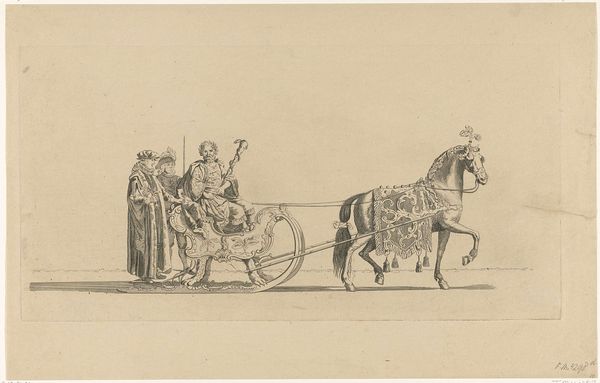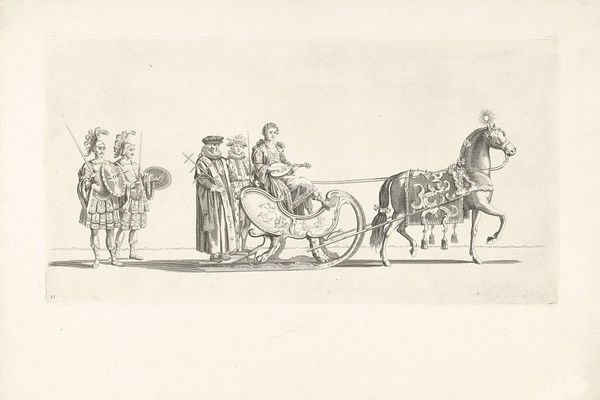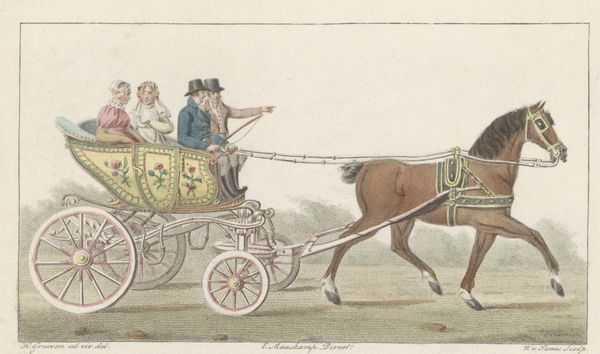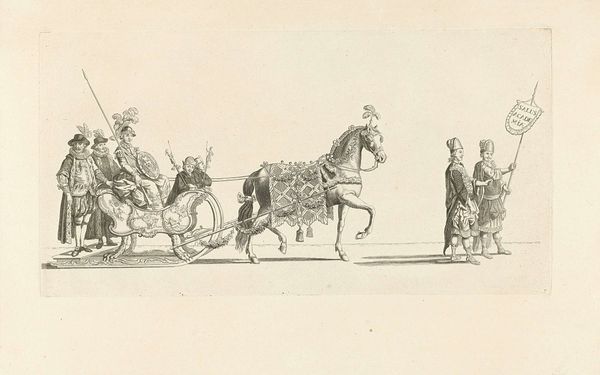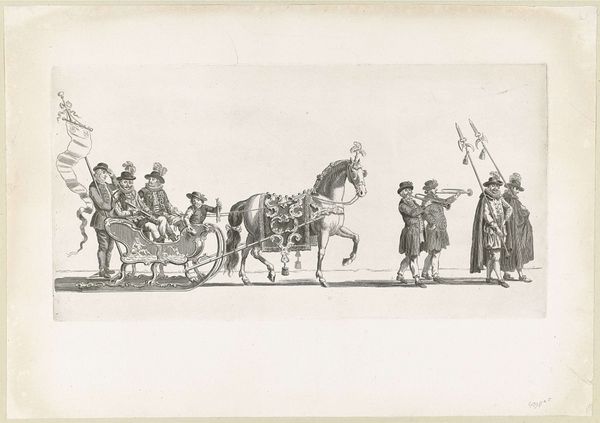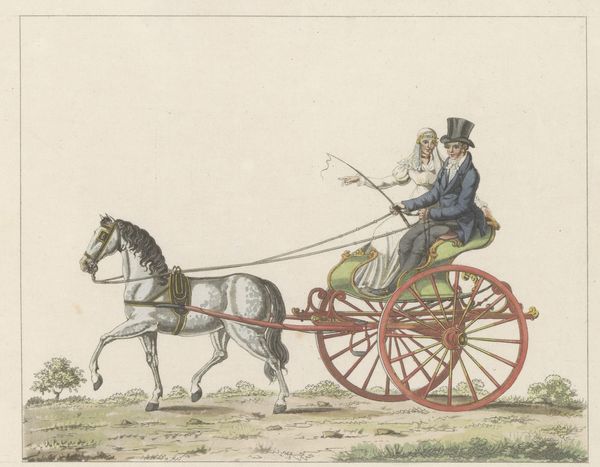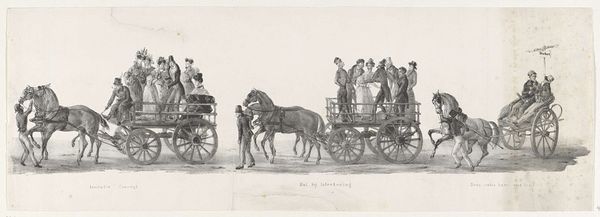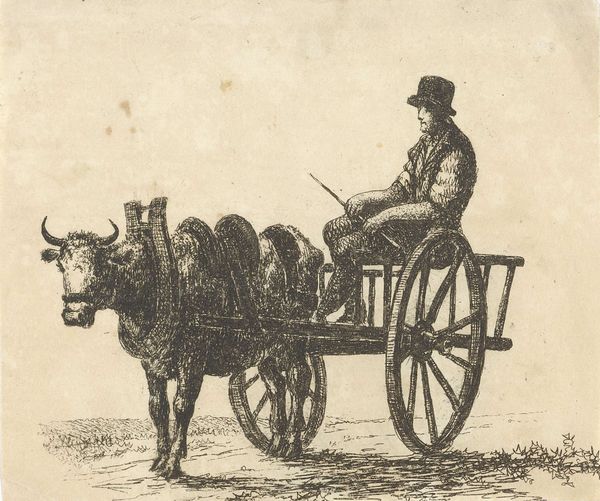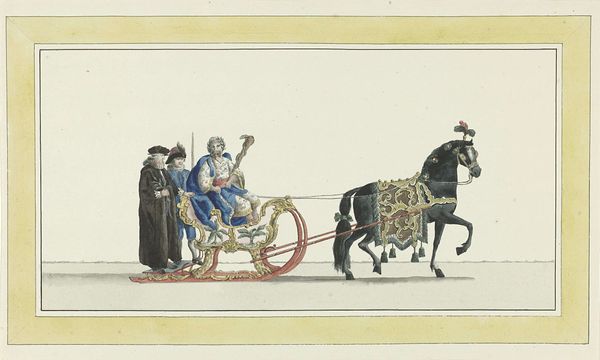
drawing, print, etching, ink, pencil, engraving
#
portrait
#
drawing
#
narrative-art
# print
#
etching
#
pencil sketch
#
ink
#
sketchwork
#
group-portraits
#
romanticism
#
pencil
#
cityscape
#
genre-painting
#
history-painting
#
engraving
Dimensions: height 167 mm, width 248 mm
Copyright: Rijks Museum: Open Domain
This drawing, made in Amsterdam between 1810 and 1825 by an anonymous artist, depicts a funeral procession, dominated by the somber black attire and draped carriage. Black, universally associated with mourning, symbolizes not just the end of life but also a transition, a gateway to the unknown. The horse-drawn carriage, shrouded in black fabric, is a motif that echoes through centuries. Recall the ancient Roman pompa funebris, where the deceased was paraded through the city, or even the medieval danse macabre, where death rides a horse, reminding us of mortality's relentless journey. The collective memory of these processions invests the image with a profound psychological weight, stirring deep-seated emotions connected to loss and remembrance. Note how the mourners walk in lockstep, their faces obscured, their individuality subsumed by the shared ritual. This procession is a public performance of grief, a communal expression of sorrow. The echoes of such solemn processions resonate even today, connecting us to a timeless human experience.
Comments
No comments
Be the first to comment and join the conversation on the ultimate creative platform.
